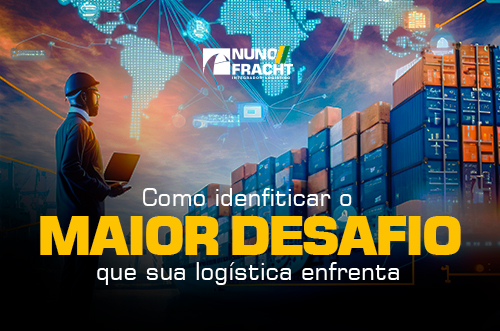
In this article, we invite you to understand, in a clear and objective way, some less obvious – and sometimes even forgotten – aspects that can become major bottlenecks in logistics. By identifying and effectively overcoming them, you will be able to firmly position yourself in the competitive context of global trade.
Hence, we’ll delve into global supply chains, where risks and opportunities coexist, and reveal practices to unravel the subtleties of customs regulations, to enhance operational efficiency and to make progress inside a market that doesn’t forgive mistakes.
Supply chain management
- The Theory of Constraints (ToR), developed by Eliyahu M. Goldratt, is a powerful method for improving supply chain performance, by focusing on identifying and managing the most critical resource, referred to as the “weakest link”. In logistics, this concept is vital, as supply chain efficiency is often hampered by a single bottleneck or constraint.
- Psychological aspects, such as risk perception, affect operational decisions. For example: more risk-averse managers may prefer to maintain larger inventories to mitigate possible supply chain disruptions, while more risk-tolerant managers may opt for a lean inventory model.
- Have you ever heard of the Bullwhip Effect? It occurs when small changes in consumer demand are amplified throughout the chain, resulting in large swings in production and stocks. This phenomenon tends to be exacerbated by communication and demand forecasting failures, leading companies to alternate between excess and shortage of stock, generating operational inefficiencies and additional costs. To mitigate it, efficient communication, collaborative planning and accurate forecasting strategies among all supply chain partners are essential.
Compliance with customs regulations and standards
- Customs regulations apply not only to the final product, but also to its origin. Some regulations require a certain percentage of a product’s value to be derived from parts or materials manufactured in the exporting country. This can affect the supply chain and sourcing decisions, especially in industries such as automotive or electronics, where components come from various global sources.
- Companies must be aware of environmental and safety regulations, which may vary considerably between countries. For instance, chemical substances and hazardous materials are subject to strict regulations on transportation, storage and disposal. Similarly, electronic products must meet certain safety and energy efficiency standards in different markets.
- Thus, awareness of export control laws and economic sanctions that can affect your ability to do business with certain countries, entities or individuals is certainly necessary. Products with both civilian and military uses (known as dual-use items) may require special export licenses, for example. In addition, companies should regularly monitor sanctions lists to ensure that they are not doing business with prohibited parties.
Equipment and infrastructure maintenance
- Modern maintenance is not limited to reactive repairs; it includes predictive maintenance, using technologies such as the Internet of Things (IoT) and data analysis. For example, sensors installed in cargo handling equipment can collect data on the equipment’s performance and use algorithms to predict failures before they occur, thus, enabling preventive maintenance and reducing downtime.
- Infrastructure maintenance in import and export operations also includes long-term assets management, such as warehouses and transportation networks. This involves strategic upgrades and expansions to meet future demands and improve efficiency.
- In addition to functional maintenance, companies must comply with increasingly restricted environmental and safety standards. These include the proper management of waste and emissions during equipment and infrastructure maintenance, as well as the implementation of improvements to reduce environmental impact, such as the use of renewable energy or zero-emission vehicles.
Risk management and cargo security
- With the increasing use of digital systems for cargo tracking and management, data protection is indispensable. After all, these systems store sensitive information about the cargo, transportation routes and customer details. Implementing robust cybersecurity solutions and methodical protocols helps reduce the risks of data breaches.
- This issue also includes the analysis of geopolitical and environmental risks. Transportation routes can be disrupted by political instability, conflicts or natural disasters. Make sure your logistics are prepared to change routes or schedules and deal with adverse events.
- Efficient risk management also involves understanding and managing the complexity of cargo insurance. Companies must secure adequate cover for different types of cargo and check the legal responsibilities associated with the transportation of goods. In addition, they should study the exclusions and limitations of insurance policies and how they apply to different risk scenarios, such as damage caused by extreme weather conditions or prolonged delays.
- Cargo transported by ships is vulnerable to cyberattacks, which typically target information technology (IT) and operational technology (OT) resources. Attacks can compromise navigation and communication systems. Furthermore, cargo management and monitoring can be targeted, resulting in theft or information manipulation. Compromises to the vessel’s internal control systems, responsible for critical functions such as engines, ballast and power systems, pose a direct risk to crew and cargo safety.

